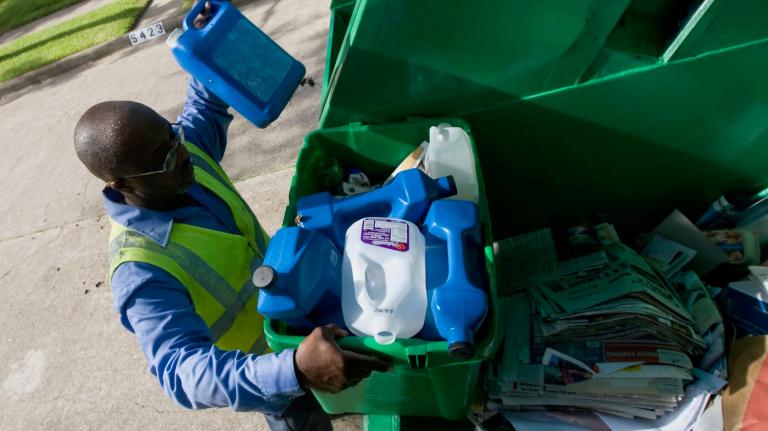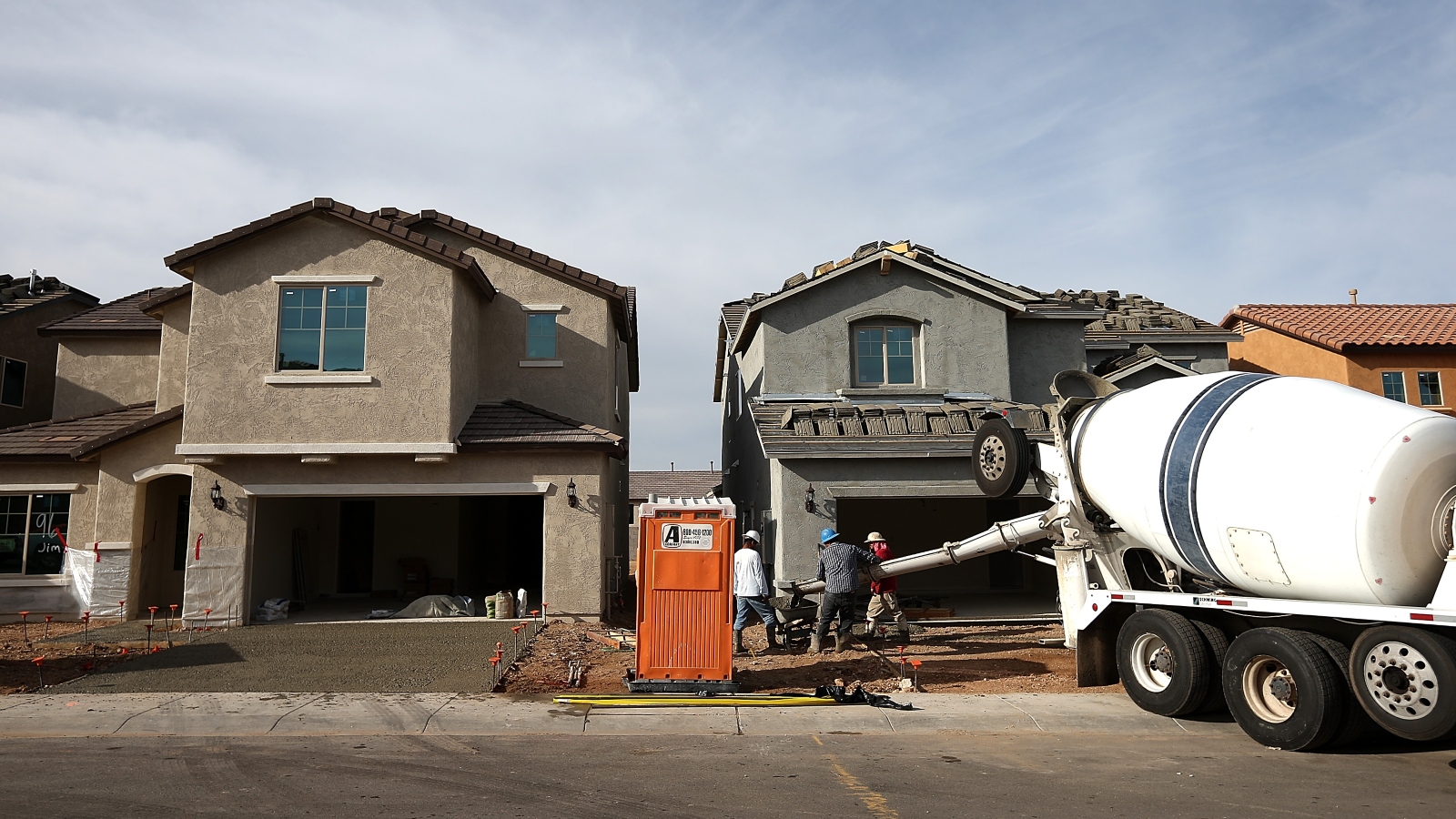Phoenix, Arizona, is facing not one but two water crises. Around a third of the desert city’s water comes from the beleaguered Colorado River. Thanks to a decades-long megadrought fueled by climate change, the city stands to lose much of that supply in coming years as the river dries up and the state faces water cuts.
Another third of the metro’s water comes from underground aquifers — and that water is running out, too. Earlier this month, Arizona’s water department published a new report assessing how much water remains in the aquifers below Phoenix. The data was alarming: The state found that it has allocated more groundwater to cities and farms over the next hundred years than is actually present in the aquifers. If the Phoenix area keeps pumping water at its current rate, those aquifers will tap out over the next century, according to the department. The total shortfall amounts to almost 5 million-acre feet, or around 1.6 trillion gallons, that were permitted for use over the next hundred years but may not exist at all.
In response to these findings, the state government just took the drastic step of limiting new housing construction in Phoenix and its suburbs, telling developers they can no longer rely on groundwater for new subdivisions. In order to build homes in Arizona, developers typically must first show they can have access to a hundred years’ worth of water for those homes. For decades, most of them have met that standard by drilling for groundwater. Now the state is cutting them off.
The announcement sent a shock wave through Arizona’s housing market and raised questions about the future of the sprawling Phoenix metroplex, which is one of the nation’s fastest-growing metro areas with nearly 5 million residents and counting. Developers have already planned thousands of new homes across dozens of cities and towns within the region. The state’s moratorium won’t make future growth impossible, but it will make it much harder and much more expensive, jeopardizing the profitable real estate business that has fueled the city’s expansion.
“The pattern of growth will change,” said Sharon Megdal, a professor of environmental science who is also the director of the University of Arizona’s Water Resources Research Center. “This pronouncement has uneven implications across the Phoenix metropolitan area.” In short, cities and suburbs that have access to river water and recycled wastewater will be able to grow for some time, but many of the far-flung cities that rely only on groundwater will face severe challenges growing further unless they spend big on alternate sources.
New construction won’t come to an immediate halt anywhere. The moratorium on new development doesn’t include some 80,000 homes that the state has already approved, and it will take a few years to build all those homes out. More than 27,000 new homes were completed in Phoenix’s Maricopa County last year. Even if that pace slows in the next few years, developers will likely run through their backlog by the end of the decade.
And once developers build all the homes for which they’ve already secured water, that doesn’t actually mean there’s no groundwater left in the Phoenix area — but it does mean that real estate companies will have to wrest groundwater from the hands of farmers who have been using it for decades. Municipal water use in the Phoenix area surpassed agricultural water use decades ago, but agriculture still makes up the largest share of groundwater usage in the metroplex, because many cities rely on the Colorado and Salt Rivers for their water. Farms accounted for about 41 percent of aquifer pumping in the area in 2021, compared to around 38 percent for cities.
Cities and farms have long been on a collision course when it comes to groundwater. When Arizona first regulated aquifer withdrawals back in the 1980s, the state all but banned new agricultural water usage, freezing the growth of the state’s thirsty cotton and alfalfa industries. But the law allowed existing farms to keep pumping in perpetuity, even as it carved out a loophole for developers to keep building new subdivisions.
Lawmakers assumed that as Phoenix expanded, developers would buy up farmland and build on it, turning water-intensive alfalfa fields into relatively water-efficient suburban streets. It hasn’t happened that way: Instead of concentrating new development on existing farmland, real estate tycoons have flocked to empty desert on the far outskirts of Phoenix and mined shallow aquifers there, leaving the farmers to continue growing their alfalfa and cotton. At the same time, industrial operations like mines and semiconductor facilities have slurped up more groundwater.
“There’s so much groundwater use that was grandfathered in,” said Kathleen Ferris, a senior research fellow at Arizona State University’s Kyl Center for Water Policy who was an architect of the state’s original groundwater law. “And because we then subsequently allowed new development to take place on groundwater, we’ve made the problem worse.”
Even so, the state’s forecast is very conservative. The groundwater analysis published last week assumes that all the farms, homes, and mines around Phoenix will keep taking water out of the ground at the same rate for the rest of the century, but that likely won’t be the case. More homes in the area are using recycled wastewater, cutting down on aquifer demand, and growers have retired thousands of acres of agricultural land over the past few decades as the economics of farming have gotten worse. If those trends continue, they would free up more groundwater for further development.
Phoenix-area farmers withdraw around 300,000 acre-feet of groundwater for irrigation every year. Even a small reduction of that total could sustain additional residential development for a time. Since an acre-foot can supply around four new homes for a year, just 10 percent of Phoenix’s agricultural groundwater could support more than 100,000 new homes for the required 100 years — about as many as the metro area has added over the past five years.
“That’s the flaw,” said Spencer Kamps, vice president of legislative affairs for the Home Builders Association of Central Arizona, which represents large home building companies. “The unmet demand [in the state’s model] is really just a midsize farm. We can make that number go away just by letting growth occur over the next, you know, three years. If the retirement of ag was recognized in the model, it would literally go away.”
The question is whether the state will allow developers to take advantage of that wiggle room. In the press conference about the new data, Governor Katie Hobbs left the door open for the state to conduct new modeling in the future.
“They’re explicit that [the model is] based on assumptions, and there could be some additional future modeling,” said Megdal. “That may change the conclusions regarding groundwater availability.”
Back in 2019, the state identified a massive groundwater shortage in the farm-heavy suburbs of Pinal County, just south of Phoenix, but a group of stakeholders in the county produced a competing model that suggested the deficit was half as large as the state said it was. The state later revised down its shortage estimates.
“We’re looking forward to the conversation,” said Kamps.
Looking beyond groundwater, however, growth only gets trickier. Once developers have claimed all the groundwater, there isn’t an easy alternate water source to sustain Phoenix’s rapid expansion. The Colorado River was supposed to offer Phoenix and Tucson a renewable water supply, but it’s more vulnerable than ever: Of all the states that rely on the river, Arizona will be first in line for future water cuts thanks to its junior legal status on the river, the result of a decades-old compromise with neighboring California.
Lawmakers have proposed numerous other solutions to shore up Phoenix’s water supply, and the state has set aside $1 billion to explore them in the coming years. Some legislators have suggested raising the height of a major dam on the Salt River that runs through Phoenix, allowing for more water storage in the river’s main reservoir. Others have thrown their weight behind the idea of building a desalination plant in Mexico and piping treated water to the United States. Meanwhile, some cities have bought into a plan to import groundwater from a valley in a remote desert region west of Phoenix.
These solutions are all viable in theory, but they would cost enormous amounts of money, and the water they would deliver would likely be more expensive than the cheap groundwater that enabled Phoenix’s growth spurt. In other words, developers and homeowners would absorb the cost of new infrastructure. The question, according to Ferris, is how much developers are willing to spend to keep building — and at what point it ceases to be profitable to build in Phoenix at all.
“None of these solutions are quick turnarounds, so I would hope that we’d be conservative in our approach for the next ten years,” said Ferris. “We have to learn to live within our means. The question is: What is that?”




